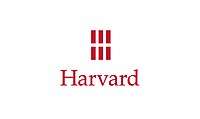Sagi Haviv
Sagi Haviv (born 1974 in Israel) is a New York-based graphic designer and a partner in the design firm Chermayeff & Geismar & Haviv.[1] Called a "logo prodigy" by The New Yorker,[2] and a "wunderkind" by Out magazine,[3] he is best known for having designed the trademarks and visual identities for brands and institutions such as the United States Olympic & Paralympic Museum,[4] the US Open tennis tournament,[5] Conservation International,[6], Harvard University Press[7], L.A. Reid's Hitco Entertainment,[8] Leonard Bernstein at 100[9], the John D. and Catherine T. MacArthur Foundation, the Milwaukee Institute of Art & Design, the International Tchaikovsky Competition, and Women's World Banking.
Sagi Haviv | |
|---|---|
 | |
| Born | 1974 |
| Education | The Cooper Union |
| Occupation | Partner at Chermayeff & Geismar & Haviv |
| Known for | Graphic designer |
Biography
Haviv was born in Nachshonim, Israel, where he spent his early life. He studied at the Telma Yelin art high school in Givataim. In 1996, Haviv moved to New York. He studied graphic design at The Cooper Union School of Art where he earned a Bachelor of Fine Arts.
Haviv began his design career when he joined Chermayeff & Geismar in 2003. There he created "Logomotion",[10] an award-winning ten-minute motion graphics tribute to the firm’s famous trademarks which was widely exhibited, appearing in New York at Corcoran Gallery of Art (2003), in Washington, D.C. (2004), the Ginza Graphic Gallery in Tokyo (2005), Centro in Mexico City (2006), and the Pera Museum Istanbul (2007).
In 2006 he became a partner at Chermayeff & Geismar,[11] where he has since developed institutional and corporate identities, print and motion graphics and art in architecture for a diverse array of clients worldwide. Haviv’s motion graphics work includes the main titles for the PBS documentary series Carrier,[12] and the 2010 PBS documentary series Circus,[13] and a typographic animation for the centerpiece performance at Alicia Keys’s Black Ball, 2009 for Keep A Child Alive.[14]
In 2013 Haviv's name was added to the masthead of the 56 year old firm Chermayeff & Geismar and it became known as Chermayeff & Geismar & Haviv.[15]
Published books
In 2011, he co-authored with Tom Geismar and Ivan Chermayeff the book Identify: Basic Principles of Identity Design in the Iconic Trademarks of Chermayeff & Geismar. The book was published by Print magazine's book imprint, (ISBN 978-1440310324).[16]
In 2018, he co-authored Identity: Chermayeff & Geismar & Haviv. The book was published by Standards Manual (ISBN 0692955232).[17]
Conferences and Awards Chairing
Haviv has spoken about logo design for the Adobe Max Creativity Conference[18] TEDx,[19] the AIGA,[20] the HOW Design Conference,[21] the Brand New Conference,[22] Princeton University, the Onassis Foundation, the American Advertising Federation,[23] Columbia Business School[24], Creative Mornings, [25] and Collision [26].
He has served as Jury Chair for the Clio Awards and the Art Directors Club[27] and Jury President for the D&AD Awards. [28]
Teaching
He teaches corporate identity design at The School of Visual Arts in New York City.[29]
He has also taught online courses on logo design for SkillShare [30] and for Domestika [31].
Published Articles
Haviv has written on the topic of identity design for Print magazine,[32] Computer Arts, and for D&AD [33]. [34]
Awards
In 2004, Haviv received the Tokyo Type Directors Club award for Logomotion, for which he also won an award from the New York Art Directors Club.
Logos designed
 The logo for the US Open Tennis Championships designed by Sagi Haviv.
The logo for the US Open Tennis Championships designed by Sagi Haviv. The logo for Conservation International designed by Sagi Haviv.
The logo for Conservation International designed by Sagi Haviv. The logo for Harvard University Press, designed by Sagi Haviv.
The logo for Harvard University Press, designed by Sagi Haviv. Logo for L.A. Reid's Hitco Entertainment designed by Sagi Haviv
Logo for L.A. Reid's Hitco Entertainment designed by Sagi Haviv
Further reading
- Chermayeff & Geismar & Haviv’s striped logo for the US Olympic and Paralympic Museum takes the form of an “abstract flame” on ItsNiceThat.com
- Heller, Steven. I Heart Design (2011) Massachusetts: Rockport, ISBN 978-1-59253-682-5
- How To Design A Logo by Sagi Haviv in Bloomberg Businessweek How To Issue, 2012
- What A Campaign Logo Is Really Saying in Bloomberg Politics
- Campaign Logos in Review, NBC
- US Open Tennis rebrand review on DesignBoom
- A Conversation with Sagi Haviv on Graphic Design USA
- Interview with Haviv on Bloomberg Businessweek
- Excerpt of Identify in Fast Co. Design
- Interview with The Futur
- Interview with the Art Director's Club
- Interview With Sagi Haviv on Logo Design Love
- The Best And Worst 2016 Campaign Logos, Bloomberg Politics
- Haviv profile on Designers & Books
- Interview With Sagi Haviv on the Logo Geek Podcast
References
- Biography at Chermayeff & Geismar & Haviv
- The New Yorker, February 17, 2011
- Out Magazine Taste Makers Issue 2009
- U.S. Olympic and Paralympic Museum site
- US Open Tennis announces new logo
- Print Magazine on Haviv's Conservation International rebrand
- Our New Logo For The Next 100 Years announced by Harvard University Press
- UnderConsideration Review of Hitco logo
- The Leonard Bernstein Office announces "Leonard Bernstein at 100"
- Logomotion
- "Sagi Haviv | January 2009 Issue | Graphic Design USA". 2010-07-26. Retrieved 2018-08-07.
- PBS Credits for Carrier
- PBS Credits for Circus
- Print Magazine on Haviv's video for Alicia Keys
- Fast Company: NBC And Pan Am Designers On How They Made Some Of The World’s Most Iconic Logos
- Standards Manual / Identity: Chermayeff & Geismar & Haviv
- Adobe Max
- TEDx Penn
- AIGA Scholarship Jury
- Sagi Haviv at HOW Design Live
- Sagi Haviv at Brand New Conference
- American Advertising Federation
- Columbia Business School Brite '19 speakers
- [https://creativemornings.com/talks/sagi-haviv Creative Mornings Sagi Haviv Announcement
- Collision tech conference site
- ADC Awards Jury
- D&AD Awards Jury
- SVA bio on Sagi Haviv
- The Logo Creative
- Domestika.org
- Print magazine author archive on Haviv
- [https://www.dandad.org/en/d-ad-graphic-design-sagi-haviv-features-opinions/ D&AD
- [https://www.creativebloq.com/news/computer-arts-celebrates-300-issues-of-world-changing-design Computer Arts